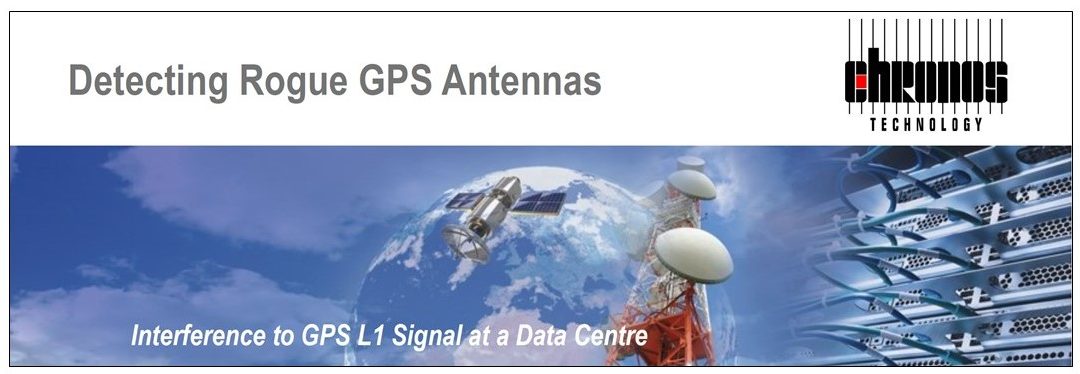Blog Editor’s Note: It’s interesting that the rouge antenna was about 60ft away from the antenna it was jamming. Also that fixing the problem automatically improved service to the company’s customers.
The Equinix LD4 Data Centre in Slough had been suffering interference to the GPS L1 signal for some time. Initial indications were that it had been happening regularly but intermittently for a number of months.
Chronos thought LD4’s problem sounded similar to a GPS interference problem it had solved for another company using its CTL3520 (Fig 2) handheld GPS jamming and interference detector. The company had been experiencing poor GPS for months and although the antenna had been replaced several times, and the receiver and even the cable run from the antenna to the receiver, the problem kept recurring. Using the direction finding feature, which pinpoints the precise source of the interference, the CTL3520 identified a rogue GPS antenna on the first visit to the roof.
This was a rogue GPS antenna at least 20 years old. When the native GPS signal is received from the sky it is amplified in the antenna. Poor connections can cause the now relatively powerful GPS signal to be reflected back through the antenna and turn it into a local jammer. This experience also showed that the safe distance to segregate adjacent GPS antennas is considerably underestimated. Some suggestions are that 2m distance between GPS antennas is OK. However, the faulty antenna was at least 20m away from the adjacent antennas.


